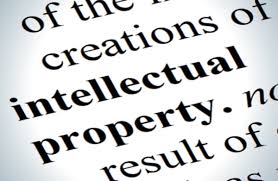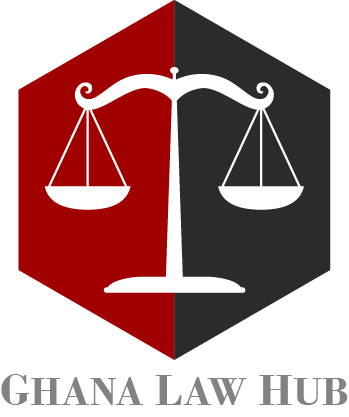 The Creatives are on a roll in Ghana. This has been made possible by technology and the internet. Everyone is either a photographer, a graphic designer or a blogger. And young people are not doing these as mere hobbies or side jobs anymore. These are full-time jobs. Ideas are being brought to life by money, time and intellect.
The Creatives are on a roll in Ghana. This has been made possible by technology and the internet. Everyone is either a photographer, a graphic designer or a blogger. And young people are not doing these as mere hobbies or side jobs anymore. These are full-time jobs. Ideas are being brought to life by money, time and intellect.
The growth of the creative industry in Ghana has led to an attendant increase in the people who live off the creative work of others. These I choose to call the Creathieves. The creathieves are people who seek to profit (financially or otherwise) from the work of others. There have also been increased tensions between creatives and those who engage them for their services.
This is article is an attempt to discuss the rights of these creatives as provided by the copyright regime in Ghana as well the limitations imposed on those rights.
Copyright does not offer protection for ideas and concepts;[1] Copyright protects the tangible expression of those ideas. The Supreme Court in Pearson Education Limited v Adzei[2] held that the idea in a literary work was embodied in the summary of it; and as a result, an author did not have the right to go against another person who had summarized it.
Works eligible for copyright protection include literary works (such as novels, stories, poetical work, scripts, textbooks etc), artistic works (such as paintings, drawings, engravings, photographs, sculptures etc), musical works, sound recordings, audio-visual works, choreographic works, derivative works, and computer software or programmes.[3] These works are only afforded copyright protection where they are original in nature.[4]
The Copyright law in Ghana gives rise to two (2) bundle of rights: Economic rights and Moral rights.
Economic Rights
The economic rights vest in the author or creator of the work, the exclusive right to commercially exploit and reap economic benefits from the copyright-protected work.[5] This is to say, the economic rights allow the creator of the work to derive a financial gain from the work. The economic rights in the work allow the creator of the work the sole rights to the reproduction, adaptation, publication and performance as well as distribution of the work. Any of above, when done by persons other than the creator of the work without his permission constitutes an infringement of the rights of the creator subject of course to the exceptions provided in the Copyright Act.
Thus, the author of a book, an artist who paints a portrait, the graphic designer or the photographer who press the shutter button of a camera own and are entitled to exclusively reproduce, publish or distribute the product of their creations. The photographer has the right therefore to, print and sell photographs he has taken, post these pictures on his social media accounts as well as display them at exhibitions. Other persons can only reproduce or publish his pictures with his permission. The creator’s permission is however not needed when an individual reproduces, transforms or adapts artistic or literary works protected by copyright for his personal use after the work has been made public.[6]
It is however not always the case that the law vests the economic rights in the copyright protected work in the creator or author. Where the work was made in the course of the creator’s employment, the economic rights in the work vest in the employer and not the creator. Same applies where the work was created under a contract of service or where the creator was hired or commissioned to create the work.[7] This is of course, subject to any agreement to the contrary by the employer and the creator.
For instance, unless otherwise agreed, when a photographer is hired to take pictures of an event, the economic rights in the pictures vests not in the photographer, but in the person who hired the photographer. The person who hired the photographer owns and is entitled to receive the negatives or soft copies of the pictures. The photographer may not reproduce (such as print), publish (on social media) or distribute the pictures unless same is done with the consent of the hirer. Any such unauthorized reproduction, publication or distribution by the photographer may give rise to a cause of action against him, though he is the creator of the photographs.
This applies equally to photojournalists employed by publishing houses, artists commissioned to paint portraits, hired or commissioned graphic designers, writers employed to write scripts for movies and television, for – hire – songwriters etc.
Moral Rights
These are non-pecuniary or non – economic benefits enjoyed solely by the creators of the protected works and allow the creator to claim and maintain a perpetual connection to their works. Moral rights protect the reputation of the creator of the copyright protected work as opposed to economic rights which gives the person(s) in whom they vest, the right to control and exploit the protected work for economic gain. Thus, moral rights, by their very nature are enjoyed by authors independently from the economic rights discussed above.
The Moral Rights in a copyright protected work vests solely and permanently in the creator of the work and encompasses the right to attribution as well as the right to demand the maintenance of the integrity of the work.[8]
The right to attribution vests in the creator of the protected work, the right to claim authorship of the work. This is to say, the person who created the protected has the right to claim that he so did. This prevents other persons from taking credit for the work of the creator. No credit where none is due. This right to attribution is even more important where the creator of the work does not enjoy the economic rights in the work, allowing him to obtain some recognition and goodwill even if he gets no monetary reward. He is thus entitled to demand that his name or pseudonym be mentioned in connection with the work whenever it is reproduced, published, distributed or adapted. He may also decide to publish or have the work published anonymously.[9] In short, the creator of the work, whether he enjoys the economic rights in the work or not, must be acknowledged or credited as such.
For example, a photographer, artiste or graphic designer may affix his name on to the works he creates or demand that he be credited as the creator of the work whenever the work is published, reproduced, distributed or adapted and has the right to, through legal means, prevent others from taking credit for his work.
The author of the work is also entitled, by virtue of his moral rights, to object to any distortion, mutilation or other modification of the work where that act would be or is prejudicial to the reputation of the author or where the work is discredited by the act. This right to the integrity of the work is important since any idea expressed in a tangible form is an expression of the creator’s personality. Any distortion or misrepresentation of the work mistreats an expression of the artist’s personality, affects his artistic identity, personality and honour and thus impairs a legally protected personality interest.[10]
Any distortion or alteration of the work which compromises the integrity of a work thereby adversely impacting the author’s name or brand may be opposed by the creator who may resort to legal action to claim damages as well as an order prohibiting further distortions or alterations.
So for example, a photographer may object to anyone editing pictures he has taken in a way that makes a mockery of his work.
Unlike the economic rights, the moral rights in the protected work cannot be transferred or assigned by the author to another person.[11] Furthermore, the author of the protected work cannot contract himself out of his moral rights.
The above issues, particularly those relating to creatives – for – hire can be resolved by simple agreements between the creatives and those who employ them. Photographers, graphic designers, writers etc can simply insert a clause in their contracts stating that they retain ownership of the economic rights in the works they have been hired to create. Either way, the works will by virtue of the moral rights, will forever be theirs.
[1] Section 2 of Copyright Act, 2005 ( Act 690)
[2] [2011] 2 SCGLR 864
[3] Section 1 (1) of Act 690
[4] Section 1 (2)(a) of Act 690
[5] Section 5 of Act 690
[6] Section 19 (1)(a) of Act 690
[7] Section 7 of Act 690
[8] Section 6 of Act 690
[9] Section 6 (1)(a) of Act 690
[10] Sarraute (1968), Current Theory on the Moral Right of Authors and Artists Under French Law, 16 AM.J COMP.L, 46.
[11] Section 9


Leave a Reply